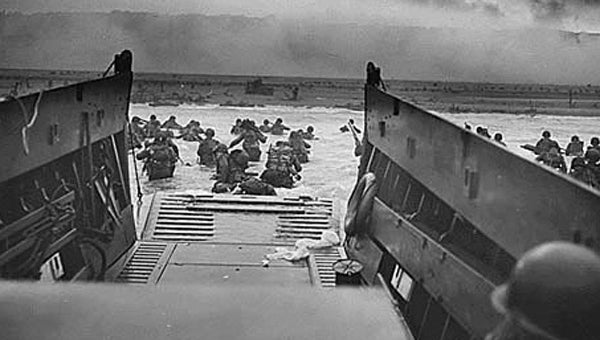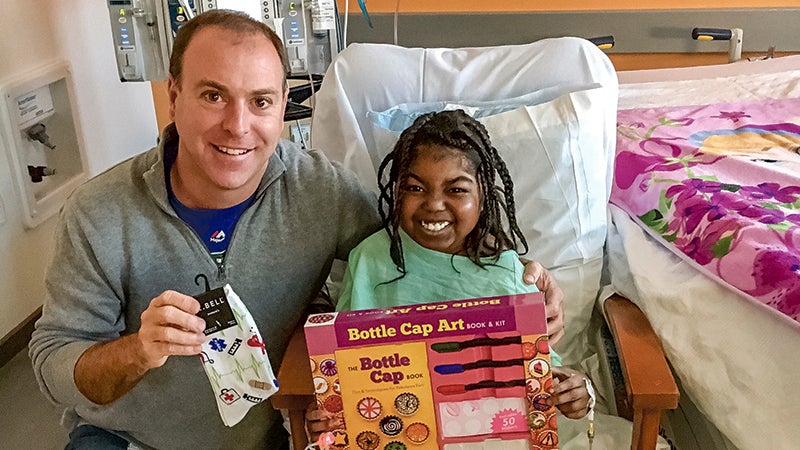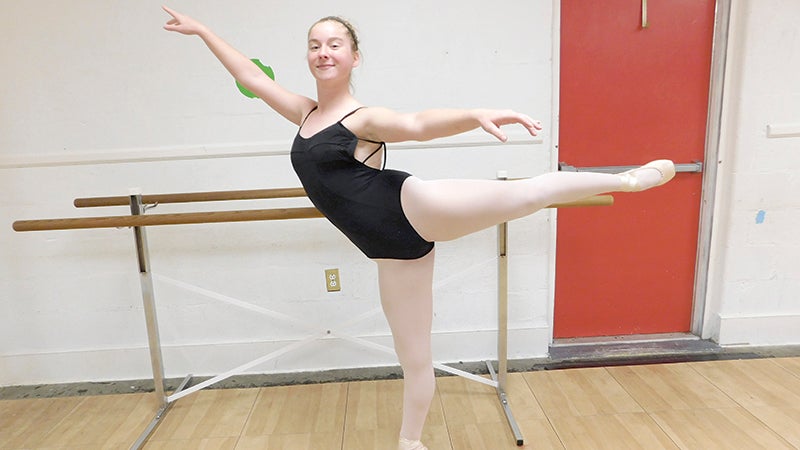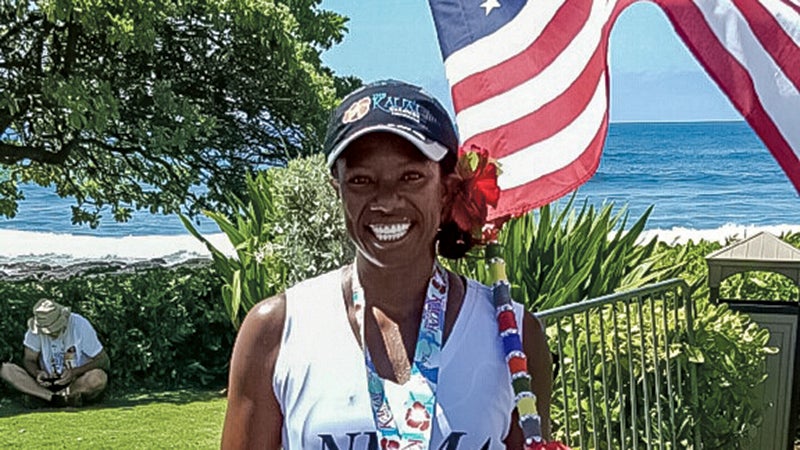Remembering D-Day, 70 years later
Published 11:05 pm Thursday, June 5, 2014

At his Suffolk home, Robert J. “Jack” Ewald shares his memories of taking part in the D-Day landings at Normandy, 70 years ago.
Suffolk D-Day veteran Robert J. “Jack” Ewald said he wanted to return to Normandy for Friday’s 70th anniversary of the World War II campaign, but a bad knee kept him home.
He was one of 160,000 Allied troops who landed along a 50-mile stretch of coastline during the monumental offensive, supported by more than 5,000 ships and 13,000 aircraft.
More than 9,000 Allied soldiers were killed or wounded, but 100,000-plus men — Ewald among them — marched across Europe to release it from Hitler’s grasp.
“It was a day to be scared,” Ewald said of June 6, 1944.
His captain had said, “If somebody is wounded or falls down in front of you, don’t touch them — keep moving forward,” Ewald said.
For Gen. Dwight D. Eisenhower, it was a crusade in which “nothing less than full victory” would be accepted.
A grain of sand in the mass of humanity floating upon the largest armada that has ever been assembled, as dawn broke on D-Day, Ewald worked to marshal his courage.
He was in the U.S. Army’s 115th Infantry Regiment, numbering about 3,000. “Overloaded for the invasion,” Ewald said, his battalion numbered 1,200, his company 200, his platoon 36 and his squad a dozen.
Besides not sacrificing momentum for the fallen, his captain’s instructions were to “get up that bluff,” Ewald said, adding, “It was a 50-meter (high) hill, really.”
When the men climbed out of their landing craft into chest-deep water, Ewald said, he reached down and pulled up “by the scruff of the neck,” dragging him to the beach, a soldier who’d fallen right in front of him.
The captain said, “’Let him go, let him go,” Ewald recalled.
They had what Ewald called a “B.A.R. man” with them. The man with the Browning Automatic Rifle “was a tough guy, from Louisiana,” he said.
They all huddled around Alan Link, who Ewald said was to become his good buddy. As well as being tough, he didn’t show any emotion, Ewald said.
“I said, ‘Link, how long are we going to be scared like this?’” Ewald said. “He said, ‘Two or three days.’ It was the only time I knew Link to be wrong, because we were scared all the time.”
Coming ashore, the men met stiff resistance as the Germans woke up and mobilized.
Ewald describes mines everywhere, which the men searched for with their bayonets.
After scaling the bluff, timing their emergence over the brink to avoid the 88mm artillery guns, the men spread out along the side of hedgerows, he said.
“They made us hold there, and some officers came up, and those idiots stayed right in the middle of the field, and the bullets were whizzing by,” Ewald recalled.
“They were trying to show us they weren’t afraid, but it was stupid, because we needed them.”
Advancing toward the town of Saint-Laurent-sur-Mer, the men couldn’t crawl over the hedgerows, because they had been allowed to grow untamed, according to Ewald. They passed through narrow openings inevitably covered by German snipers.
At the end of that first day, Ewald’s regiment was backed off Saint-Laurent after the 116th secured the Saint-Laurent draw.
They posted guards around the hedgerow and tried to get some sleep.
Rising at 2 a.m. after dozing for a couple of hours, they began their advance inland and, facing “fierce fighting,” diverted to various locales, Ewald said. Saint-Lo, for instance, was taken 42 days after coming ashore, he said.
Soldiers referred to the primitive roadways as “sunken roads,” Ewald explained, because Hedgerows rose up on either side and hundreds of years of traffic had rutted them out deep.
The sunken roads would be risky to drop into, and the men were told to stay out of them, “but they were the only way to advance.”
One day, Ewald said, about half his company was lost to artillery fire after entering a sunken road. The captain and most of the officers were among the dead.
Ewald and many others in the rank-and-file figured it was a friendly-fire incident, he said, because American artillery created black smoke and a lower “booming” noise, while the Germans’ created white smoke and a sharp “bang.”
But when the higher-ups investigated, they announced that the Germans were responsible.
“They knew that the (American) artillery would never want to fire again” if they were told the truth — that they had killed Americans — Ewald said.
Hunger was a constant problem. But one time, Ewald and a buddy patrolling together ate well.
The Germans had shot up a convoy of Jeeps full of food for the Americans. “We were hungry,” Ewald said. Not long after that, they came across 15 or 20 Germans enjoying a meal. The Germans scattered, and Ewald and his friend loaded their mess gear with mashed potatoes and greens.
After Ewald and his unit had fought almost two months amid the hedgerows, the 9th SS Panzer Division captured Ewald and a couple of his men as they tried to help a wounded soldier.
His time in four different German POW camps spanned nine months. When the Russians liberated the last camp, he and his comrades were told they would be sent to the Black Sea and then back to the U.S., Ewald said.
Not trusting the Russians — fearing they’d end up in Siberia — Ewald and a couple others escaped under the fence one night during a German strafing attack.
At the first village they came to, they saw female Russian Cossacks on horseback “hacking on anything alive with sabers,” Ewald recalled.
Moving on, passing through several more towns, they came to a Shell gas station. The pumps were gone, and an old man and an old woman in the two-room building agreed to let them sleep in a barn out the back.
Ewald and his friends piled into the hayloft after gorging themselves on dry oats stored in barrels — their stomachs swelled painfully after chasing the meal with well water — but soon, three Russians came up the stairs.
The senior of the three, a lieutenant, wanted the Americans captured and taken back through Russia, but Ewald pretended to know an uncle of one of the others who lived in Chicago, and the sergeant lobbied his superior for their freedom.
“The lieutenant was getting ready to pull his pistol out, and the sergeant reached down and put his hand on his pistol,” Ewald said.
“The lieutenant waved his hand and went down the stairs. They left us.”
These events 70 years ago seem almost unbelievable, Ewald said, adding, “If I didn’t keep talking about it, I’d think I was telling a story.”
Ewald said his contribution “really doesn’t make that much difference. (But) those guys buried over here and buried over there, they are the ones that contributed their lives. They are the heroes.”
Ewald said he doesn’t want to bring out the dark memories he has pushed to the back of his mind. “I prefer to remember the funny things,” he said.
“I will say this: I never shot a man in the back, and I never shot an unarmed man. But I saw it done. Oh, I saw it done.”
Ewald said he wanted to take his wife to visit Normandy, but she died before they could go. In 2010, he traveled there with his daughter and granddaughter. They paid their respects at Link’s grave.
He also put Link’s name on the honor roll at the The National World War II Museum at New Orleans.
“Apparently he didn’t have any family,” Ewald said.






